For centuries, the Danube, the second-largest river in Europe, has both divided and unified Europe. The river has acted as a natural border between countries and empires. The numerous fortresses on its banks testify to its turbulent history, but today, this mighty river connects people rather than divides them. While the Danube flows through ten countries, it exhibits its amoebic personality in Serbia – widest (5.5km), narrowest (150m) and deepest (93m). The legend-shrouded eastern region of Serbia is largely off the grid and unknown to most tourists; however, the entire section of the Danube in Serbia is navigable and is a great way to explore the historical, archaeological, gastronomic and cultural side of the region.

Exploring the Danube in Serbia is like visiting an open-air museum – ancient fortresses, prehistoric archaeological ruins, timeless cities, spectacular national parks, mega hydropower plants, ancestral wine cellars and arresting natural formations bejewel the meandering river. This scintillating scenery is best admired from the water. Adventure spots that dot the river provide an additional incentive to thrill-seekers.
To understand the river closely and deeply, I went on a three-day excursion from Belgrade to Kladovo and back. One day was reserved on the cruise, and the other two were road trips along the River Danube. During the whole trip, I discovered attractions ranging from the sacred to the subterraneous.
Day 1: Cruising the Danube from Belgrade to Kladovo (11 hrs)

At 7:30 am, I boarded the Aquastar Maxim Cruiser from Belgrade. As I crossed the Belgrade Fortress, Smederevo appeared, where the Morava and Danube rivers meet, creating the widest point of the Danube (5.5 km).
Shedding more light on the historical relevance of the place, my travel guide Sara Damnjanović Stanišić said,
Owing to its strategic location, Smederevo was chosen as a site for building a medieval military Fortress in the 15th century to protect the Hungarian empire from Ottoman attacks. The Smederevo Fortress aka Ram fortress was built on a steep slope surrounded by water on three sides and was defended by 25 towers. For a brief period, it even became the capital of the erstwhile Hungarian Empire when Belgrade fell into the hands of Turks.
Our cruise passed through the 15th-century gigantic Golubac Fortress, where we entered the Djerdap National Park, also known as the Iron Gate. It is the longest (100 Km) and the deepest gorge (93m) in Europe and was almost unnavigable till the construction of two dams in 1971.
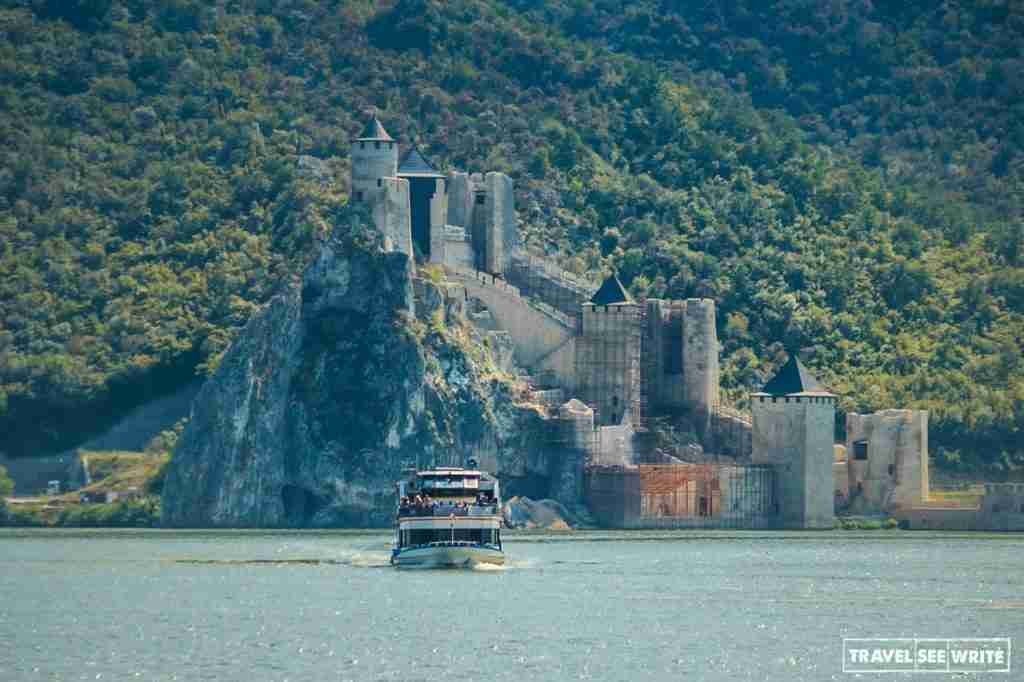
The Iron Gates hydroelectric project was a joint project of then Communist Romania on the north bank and Communist Yugoslavia on the south. It was both a remarkable feat of engineering and a tragedy for local inhabitants. As the water level rose to 100ft higher, the adjoining villages, all the buildings on the legendary Turkish fortress island of Ada Kaleh and many undiscovered archaeological sites sank beneath the waters forever. The town of Orsova, once a key port for the passenger steamships, was also destroyed by the new lake.

As we sailed closer to Koldova, we crossed an area peppered with monasteries, a 55m high and 25m wide rock sculpture of the Dacian King, Decebalus and Tabula Traiana where the Roman Emperor Trajan left a permanent imprint on the rock. After a 9.5-hour cruise, we arrived at Tekija from where a short bus transfer took us to Kladovo.
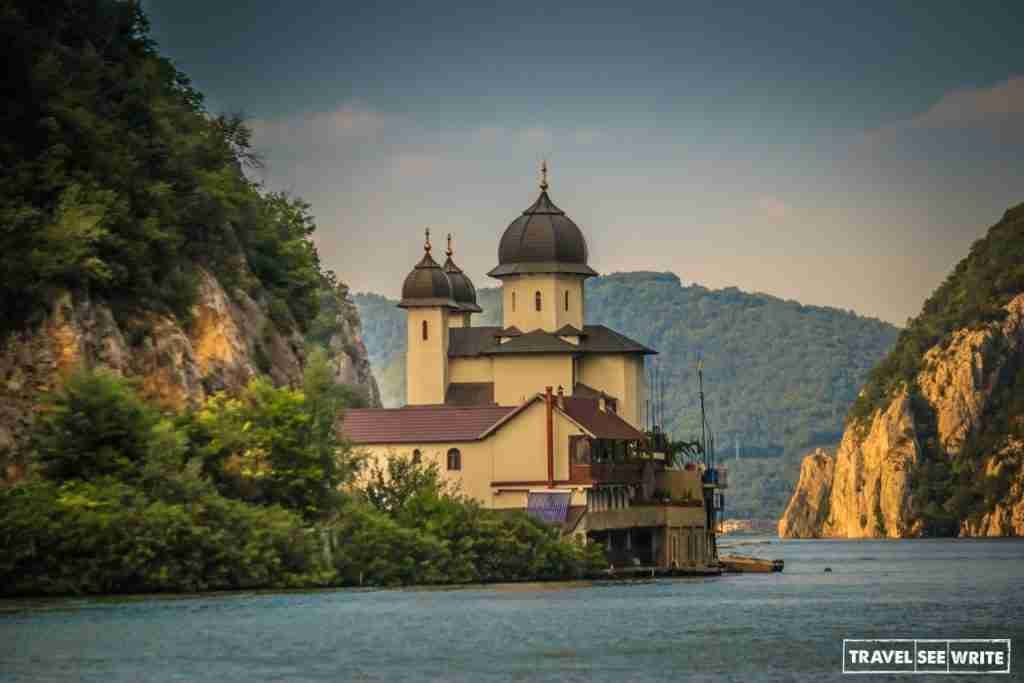
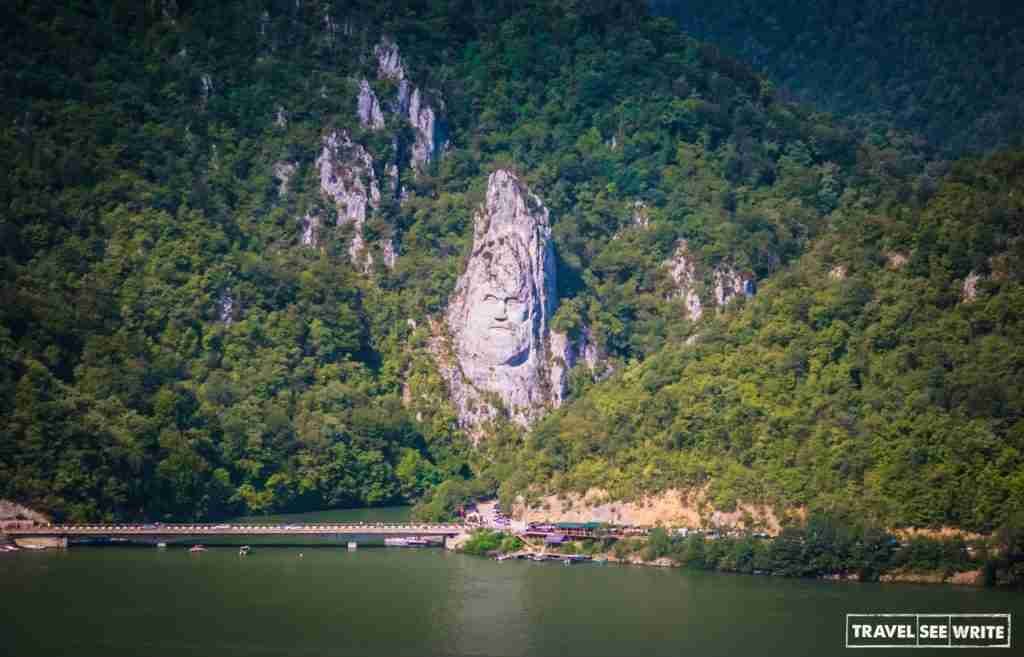

Day 2: Savouring the nature and gastronomy in Vratna and Rajac (7 hrs)
Driving from Kladovo, we reached the remote village of Vratna where we saw three gigantic stone arches known as the Vratna Gates. An uphill well-marked trail from the serene 14th century Vratna Monastery through the forest led us to the giant Gates. These gates were moulded by erosion in the Vratna river canyon and are the highest nature made stone bridges in Europe.
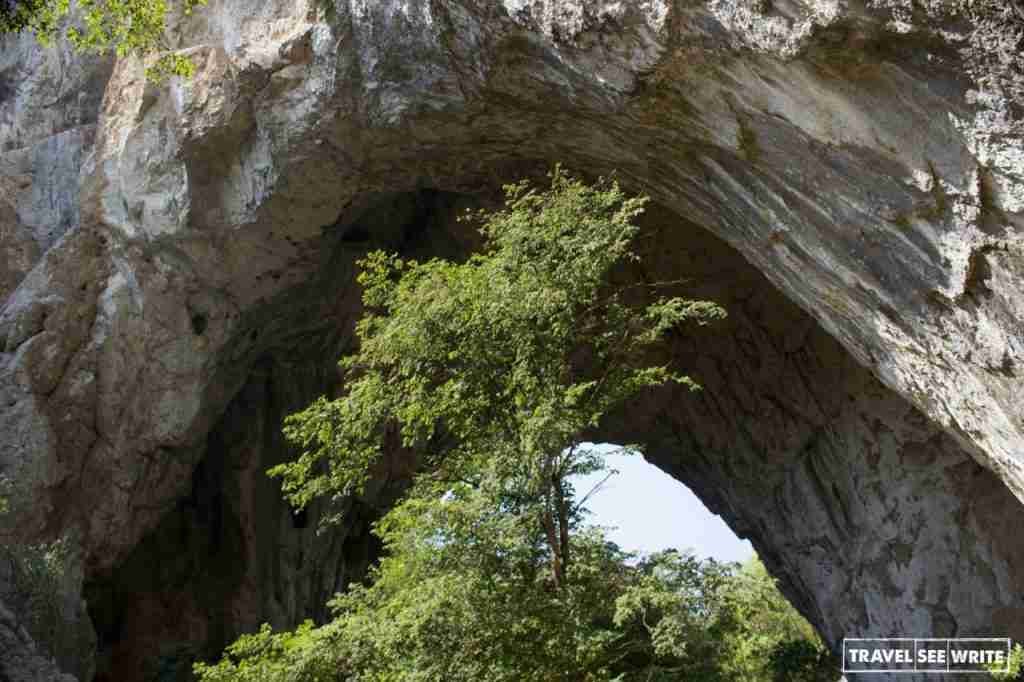
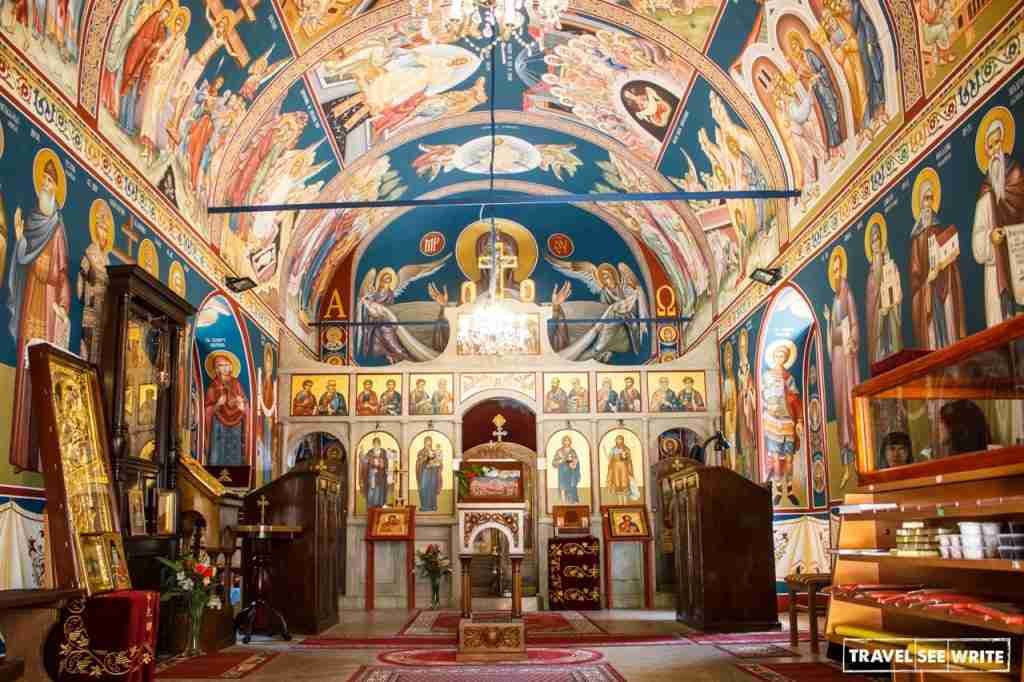
The next stop was a delight for oenophiles like me. The Negotin region in the Danube’s hinterland has been making wine since the 3rd century. As I walked through the atmospheric streets of Rajac village I saw 18th- and 19th-century wine cellars made of stone and partially buried into the ground. While walking through the ground I noticed that none of the over 20 stone houses had windows and didn’t show signs of permanent habitats.

Upon enquiring, Sara replied,
Nobody stays in these windowless houses. They existed since the 18th century to make, store, and relish the delicious wine the region is famous for. The villagers visit during the day to work and retreat to their homes at night.


After the village tour, unlimited wines and scrumptious local Serbian lunch was served at a Kafana (traditional restaurant in a tavern). The experience was further enhanced by an accordion-playing musician. Reluctantly we bid goodbye to our friendly hosts to return to Kladovo.
Day 3: Retracing history from 6500 BC in Lepenski Vir and Viminacium (11 hrs)
On the last day of the tour, we drove along the Danube to arrive at the archaeological site of Lepenski Vir, located on the right bank of the Danube in the Djerdap gorge near the town of Donji Milanovac. The local guide with a lot of enthusiasm explained that Lepenski Vir is one of the largest and most significant prehistoric archaeological sites in the world from the Stone Age. The culture of Lepenski Vir is considered around 8,5 millennia old and is a cradle of archaeological discoveries that have changed our knowledge about the early Stone Age in Europe.

the oldest European and world urban settlements East Serbia
After Lepenski Vir, we visited the ethno eco-complex called ‘Captain Misa’s Hill’. Here, not only breath-taking views of the Danube and home-made traditional Vlach cuisine lunch welcomed us but also a world-famous sculptor, Zika. When I was talking to him, my eyes froze on his bare feet. Noticing my inquisitiveness, he revealed his secret.
For the last two and a half decades I remain bare feet from Spring to Autumn because I get positive energy from the ground.
He was really happy to see an Indian tourist and shared his most cherished memory of hosting Indira Gandhi, who visited Serbia when Yugoslavian president Tito was in power.
As I roamed around the property, I couldn’t help but get awed by the 400 pieces of wooden sculptures carved by the owner himself, who was self-taught in the profession. Close by, an art gallery and vintage wine gallery enticed me. Although the wines were not on sale, you could buy any piece of artwork. Beautiful pathways lined with flower beds, fruit-laden trees and mini-open chalets led the visitors to the glorious views of the Danube river.
After spending a good few hours, we left for the last stop of the trip, Viminacium. One of the most important Roman towns and military encampments from 1st to the 6th century where excavations are happening till date.

As golden hour embraced Belgrade, my trip came to an end with a promise to return soon.
When you are on the Danube, don’t miss…
The biggest music festivals in Serbia are also held on the Danube.
In the first half of July, one of the biggest European music festivals – EXIT festival, is held in a beautiful abandoned fortress – the Petrovaradin fortress in Novi Sad. Here more than 1000 artists perform on over forty different stages.
Founded in 2000, it started as a student movement, fighting for democracy and freedom in Serbia and the Balkans. Since then it has twice won the Best Major Festival award at the European Festivals Awards, for 2013 and 2017. Freedom and social responsibility is still a key aspect of the festival activities.
In 2019, Novak Djokovic Foundation and Exit Foundation jointly organised a new nation-wide charity campaign called “To give every child an equal chance, Build preschools with us!”
Another festival worth attending is the Belgrade Beer Fest that is held on the confluence of the Sava and the Danube rivers, in the second half of July. Here good times are guaranteed with a cold beer and the good music of regional and domestic bands.
Interested to know more about Serbia? check out the following articles:
PRACTICAL TIPS ABOUT SERBIA TRAVEL:
What Visa is required?
Serbia is the only European country to offer Visa-free entry to Indians. Indians can enter, transit through and stay in Serbia without a visa, during a period not exceeding 30 days from the date of entry, within a period of one year.
How to get there?
You can get to Serbia by flights, trains, buses, cars or ships.
By flight: Along with the national carrier ‘Air Serbia’ many international airlines have regular flights to Nikola Tesla Airport near Belgrade from around the world.
By bus: The regular bus routes connect Belgrade with all the regions of Serbia. There are also many international buses which go to neighbouring countries and most European countries. Buses are generally more expensive than trains but are more frequent and faster.
By train: The wide network of railroads connects Belgrade with all parts of Europe, and many parts of Serbia with day and night trains. I used Eurail’s night train to travel from Croatia to Serbia and then onwards to Bulgaria. However, I don’t recommend taking a night train if you are travelling alone. Destinations accessible by rail include Belgrade, Nis, Novi Sad and Subotica. Serbian Intercity trains can be crowded, especially during holidays, and sometimes reservations don’t help much. Services are often overbooked, unreliable and unsafe.
By car: It is the best way to explore Serbia.
By Ship: Many European companies organize cruises on the Danube to Belgrade.
Local transport: Buses are the most popular and practical means of getting around. Trams and trolleybuses are good too. Trains are cheaper but slower. Taxis could easily be found.
What currency to use?
The currency is the Serbian Dinar, which is worth about 100 per Euro
How much does it cost?
Three days / two nights – by boat and bus costs 175 Euros per person. Tour price does not include drinks on the boat, optional excursions on the 2nd day and other individual expenses. For more information check Aquastar Maxim or Serbia Travel
Published in
The abridged version of this story was published in the Asian Age on 7 July 2019. https://www.asianage.com/age-on-sunday/060719/down-the-danube.html
Inspired? Pin these to your Pinterest boards





Disclaimer
I was invited by Serbia Travel. However, all the views expressed above are based on my personal experiences in the country during my visit. Images used are shot by me. Please do not copy anything without written permission.

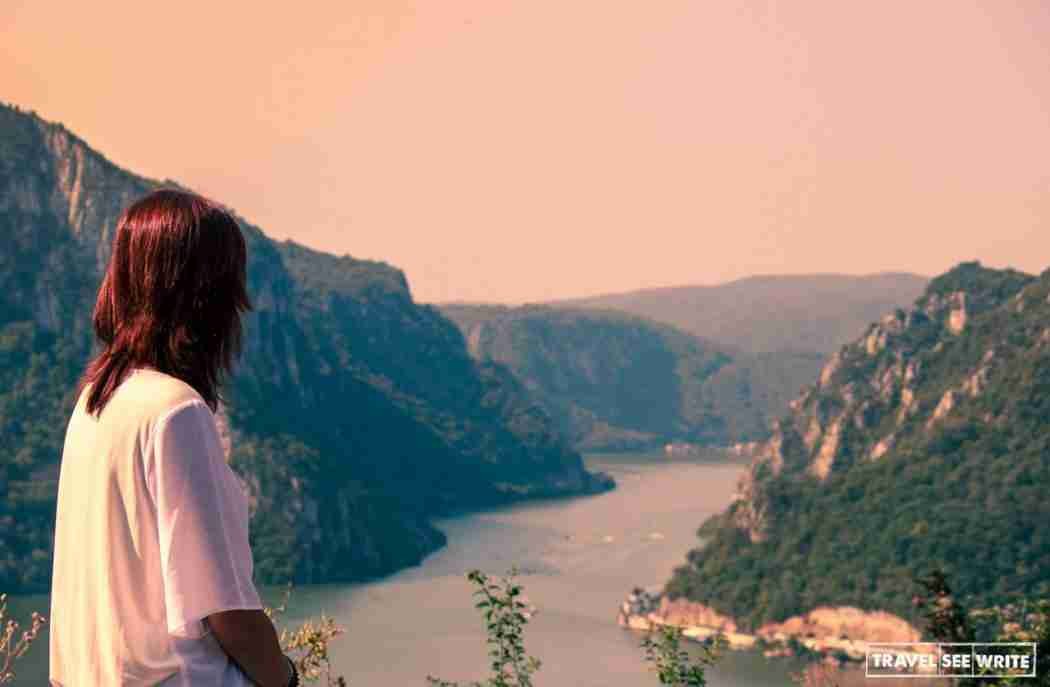
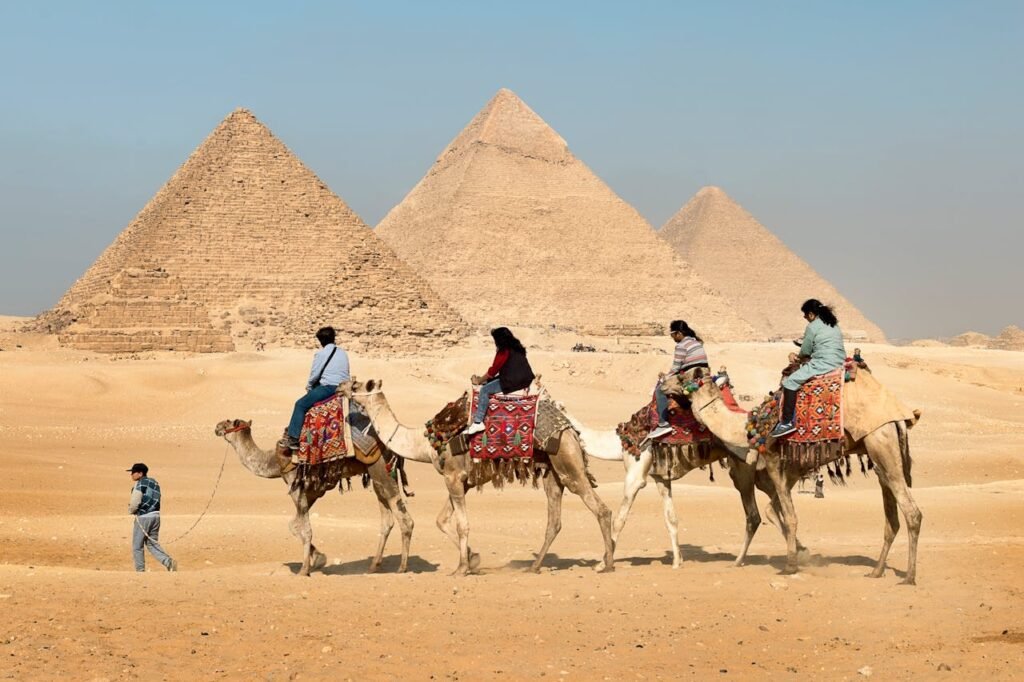

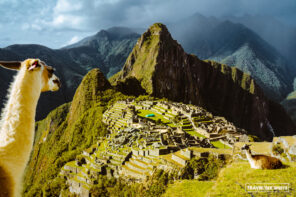

such beautiful place for the spending some time. and very amazingly describe the beautiful of serbia…thanks for sharing this….
OMG! It is a dream of mine to visit Serbia! I have been to Bosnia and Kosovo but didn’t manage yet to visit Serbia. I had no idea that you can do a river cruise through Serbia, it’s the perfect way to enjoy the natural beauty of this pristine country.
Wow, I had no idea Serbia was this beautiful! I’ve never heard of a cruise through Serbia, but it certainly looks like an amazing options with some amazing sites along the way. The food looks similar to what I grew up eating in Poland. What a fun way to experience a country!
I have always wanted to take a Danube River cruise. Honestly, I never knew the Danube went through Serbia though. Your traditional Serbian meal looks really nice. There looks to be so many beautiful and interesting places in Serbia. Your boat and bus costs seem very reasonable too!
Having in mind all Serbia has to offer, it’s surprising that it’s one of the least visited countries in Europe. The lack of tourist infrastructure is probably the main reason for it. Getting off the beaten track in Serbia isn’t easy but I’m glad to see you did a fair share of exploring.
Hi Archana,
It’s a mind-blowing adventure you had in Serbia. A whole way explained with pictures made looks really interesting and made the living cost plan easy. It was a marvellous adventure for you. The 2 best parts I have found is Golubac Fortress and Decebalus rock carving, interesting facts to know.
Great job! Keep it up.
This cruise over the Danube sounds so fascinating, plus Serbia is so high on my wishlist! The views are truly beautiful and there are so many interesting places to explore. Love the Vratna Monastery, the frescoes are stunning!
This is a wonderful trip! The Danube river cruise we have here in the west Europe doesn’t include this part. So I would keep this as reference for the upcoming trip there.
getting inspiration to travel to Serbia!!
The Danube river is so iconic and its banks hold so many untold stories in their bosoms. It is indeed an open-air museum, and what better way to experience this than on a cruise. It must have been an unforgettable experience. My attention was particularly riveted by, Mraconia Orthodox monastery, and the Golubac Fortress. The river cruise definitely seems to have been an epic voyage.
The Danube river cruise looks so pretty. It is a great way to spend time in Serbia. Decebalus rock carving looks photogenic. Thanks for sharing the time taken for the cruise, how to get there, visa needs, and cost.
What lovely sites you experienced on this river cruise, I don’t think I’ve ever seen such a lovely sunset, and the vistas along the banks are stunning. Seems like you covered a lot of ground in 3 days. (The artist Zika sounds like a very interesting fellow, too!)
The Danube through Serbia is definitely on my travel wish list now!! Thanks for posting this absolutely beautiful and helpful description.
Can you suggest some stay options (preferably eco stay) around the river?
We have yet to do a river cruise. Seeing Serbia on a cruise sounds exciting. I love that you can see historic sites like the Golubac Fortress and the Mraconia Orthodox monastery while you are in transit. It was great that you got to try local wines and foods on your day trips. It would be great to schedule a river cruise during a big music festival or for a beer festival. Sounds like a great way to taste test Serbia.